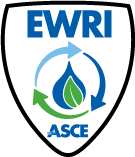Wednesday, May 20 | 8:30 a.m.
Opening Plenary Panel Session
TMDL Analysis and Modeling State-of-the-Art and State-of-the Practice
 Ebrahim Ahmadisharaf, Ph.D., Hydrologic Scientist at DHI, Water Resources Department
Ebrahim Ahmadisharaf, Ph.D., Hydrologic Scientist at DHI, Water Resources Department
Dr. Ebrahim Ahmadisharaf is an elected member of the ASCE-EWRI TMDL Analysis and Modeling Task Committee and Watershed Management Technical Committees. He is currently a Hydrologic Scientist at DHI. Prior to joining DHI, he was a Postdoctoral Associate in the Department of Biological Systems Engineering at Virginia Tech.
His work primarily focuses on simulating coupled human-water systems to support decisions on the design of infrastructure, pollution control and flood mitigation. He has done research on watershed protection, surface hydrology, urban stormwater, dam break and risk analysis. He has a PhD in Civil and Environmental Engineering from Tennessee Technological University and both MSc and BSc in Civil Engineering from Sharif University of Technology, Iran.
His research has been published in several peer-reviewed journal articles. Dr. Ahmadisharaf has also delivered multiple presentations at state, national and international conferences.
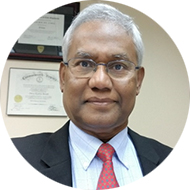 Deva K. Borah, Ph.D., P.E., F.ASCE, Senior Engineer at the City of Chesapeake, Department of Public Works, Chesapeake, VA
Deva K. Borah, Ph.D., P.E., F.ASCE, Senior Engineer at the City of Chesapeake, Department of Public Works, Chesapeake, VA
Dr. Borah has over 40 years of experience in Civil, Environmental, and Agricultural Engineering as an engineer, researcher, and educator at government agencies, private organizations, and academic institutions. He developed and published five original models simulating hydrology, hydraulics and nonpoint-source pollution in watersheds, streams/rivers, estuaries, tidal bays, and shorelines. He applied those and other models in engineering projects solving real world problems. He also critically reviewed currently available prevalent watershed hydrologic and nonpoint-source pollution models, compared their mathematical bases and various other aspects, and published those in refereed journals.
Dr. Borah is the current and past chairs of ASCE EWRI TMDL Analysis and Modeling Task Committee (TMDL-TC) and Watershed Management Technical Committee, respectively, and the Past President of ASCE Central Illinois Section East Branch. Under his active participation and leadership, the TMDL-TC published an ASCE Book in 2017 “Total Maximum Daily Load Analysis and Modeling: Assessment of the Practice,” a Special Collection of articles in 2018-2019 on “Total Maximum Daily Load Analysis and Modeling: Assessment and Advancement” in the Journal of Hydrologic Engineering (Dr. Borah was the lead Guest Editor), and currently writing an ASCE Manual of Practice on TMDL Analysis and Modeling. Dr. Borah published his work in over 50 journal articles and book chapters and numerous conference presentations. He received the ASABE Outstanding Reviewer awards in 2009 and 2010. He is currently one of the Board of Directors of Virginia Lakes and Watersheds Association and Chair of its Watershed Committee.
Dr Borah received his Ph.D. in Engineering Science from the University of Mississippi; M.Sc. in Hydraulics, Hydrology and Coastal Dynamics from University of Strathclyde, Glasgow, U.K., and B.E. in Civil Engineering from Assam Engineering College, Guwahati, India. Hobbies include playing and coaching soccer and taking parts in cultural performances and social activities (past Presidents of Assam Association of North America & Asom Sahitya Sabha North America, and past Treasurer of Assam Foundation of North America).
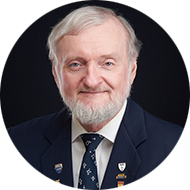 Steven C. McCutcheon, Ph.D., P.E., D.WRE, F.EWRI, F.ASCE, National Expert and Senior Environmental Engineer at the US EPA (retired), Hydrologic and Environmental Engineering
Steven C. McCutcheon, Ph.D., P.E., D.WRE, F.EWRI, F.ASCE, National Expert and Senior Environmental Engineer at the US EPA (retired), Hydrologic and Environmental Engineering
Dr. McCutcheon is a National Expert and Senior Environmental Engineer (retired) with 37 years of experience with the US Environmental Protection Agency and US Geological Survey. He wrote and edited the USEPA technical guidance on waste load allocation and served on several working groups that prepared federal regulations for water quality management. He pioneered the modelling approach used to establish the first total maximum daily loads (TMDLs) to manage stream temperature effects on fisheries. He pioneered hydrodynamic, sediment, and contaminant modeling at Superfund sites. He is currently serving on the ASCE EWRI Task Committee that is writing a manual of practice on TMDL analysis. He serves on the EWRI Task Committee on Curve Number Hydrology that proposed modernization of four chapters of the USDA Natural Resources Conservation Service National Engineering Handbook. Author of 4 books and 274 other publications; he was the award-winning editor of Environmental Engineering co-editor of Environmental Science and Pollution Re¬search, and associate editor of the International Journal of Phytoremediation (with service on four other journal editorial boards).
Winner of 19 significant awards, he was a Senior Director of the ASCE Board, President American Ecological Engineering Society, founding diplomate American Academy of Water Resources Engineers, founding F.EWRI, member of the International Society of Environmental Ethics, and elected F.ASCE. He held appointments at Clemson, Georgia, Tulane, Vanderbilt, Alabama, and Parma (Italy) and advised students and faculty at 12 other universities in 4 countries. He managed $US 6 million in consulting and research financial support.
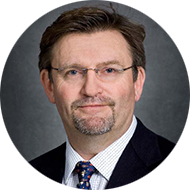 Nigel W.T. Quinn, Ph.D., P.E., D.WRE, F.ASCE, F.EWRI, FiEMSs, Research Group Leader at Berkeley National Laboratory, HydroEcological Engineering Advanced Decision Support
Nigel W.T. Quinn, Ph.D., P.E., D.WRE, F.ASCE, F.EWRI, FiEMSs, Research Group Leader at Berkeley National Laboratory, HydroEcological Engineering Advanced Decision Support
Nigel Quinn is a Research Group Leader at Berkeley National Laboratory with a long history of working on salinity, selenium and other water resource and water quality issues in the San Joaquin Valley. He has been associated with the Bureau of Reclamation for the past 30 years first working as lead hydrologist with the San Joaquin Valley Drainage Program in the late 1980’s , on selenium management issues an the Grasslands Bypass Project in the 1990’s and as technical chair of the Central Valley salinity Coalition from 2000 onward.
An expert on monitoring network design, flow and water quality monitoring – he has been a leader in the implementation of the concept of real-time water quality management.
 Harry Zhang, Ph.D., P.E., Program Director on Integrated Water and Stormwater at The Water Research Foundation
Harry Zhang, Ph.D., P.E., Program Director on Integrated Water and Stormwater at The Water Research Foundation
Dr. Harry Zhang is program director on Integrated Water & Stormwater at The Water Research Foundation (WRF). Dr. Zhang manages Sustainable Integrated Water Management (SIWM), which includes topic areas on integrated water, stormwater, watersheds, decentralized systems and climate impacts on water quantity and quality. With 25 years of experience, he has a Ph.D. degree with major in Environmental Engineering (Water Resources) and minor in Systems Engineering from University of Virginia. Dr. Zhang is the subject matter editor on sustainability for Journal of Water Science & Technology and Journal of Water Supply by the International Water Association. He has published various journal papers and peer-reviewed book chapters at Water Encyclopedia and Encyclopedia of Sustainability Science and Technology. Dr. Zhang is a registered Professional Engineer in Virginia and Maryland.
Dr. Zhang is a member of ASCE EWRI TMDL Analysis and Modeling Task Committee. He actively participated in preparation of an ASCE Book in 2017 “Total Maximum Daily Load Analysis and Modeling: Assessment of the Practice” and a Special Collection of articles in 2018-2019 on “Total Maximum Daily Load Analysis and Modeling: Assessment and Advancement” in the Journal of Hydrologic Engineering. Dr. Zhang is currently serving as the lead editor of the ASCE Manual of Practice on TMDL Analysis and Modeling that the Task Committee is writing.
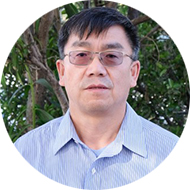 Zhonglong Zhang, Ph.D., P.E., PH, Research Professor at Portland State University, Civil and Environmental Engineering Department
Zhonglong Zhang, Ph.D., P.E., PH, Research Professor at Portland State University, Civil and Environmental Engineering Department
Dr. Zhang is a Research Professor of Civil and Environmental Engineering at Portland State University and a Senior Scientist at LimnoTech. He was an Adjunct Professor at Mississippi State University and Jackson State University in 2007 – 2016. He has 30 years of experience in wide ranging areas of watershed and water quality modeling. His research activities have focused on advancing watershed and water quality modeling. He has worked side‐by‐side with the U.S. Army Corps of Engineers team for the development of plug‐in water quality modules for a variety of hydrologic and hydraulic models. He is the primary author of a set of water quality modules that are currently coupled with HEC‐RAS, HEC‐ResSim, AdH, SRH‐2D. He is a co-developer of the riparian vegetation module in HEC‐RAS and the latest CE‐QUAL‐W2 V4.2. Additionally, he conducted 1D, 2D and 3D water quality and ecological modeling studies throughout the country to evaluate environmental impacts and water quality problems, and support ecosystem restoration projects. He was instrumental in leading a watershed modeling development and study to examine the transport and fate of nutrients in the whole Mississippi River Basin.
He has developed and lectured at water quality modeling workshops and short courses and provided review and technical support for USACE, EPA and FEMA. He has been an active participant in professional organizations and served on several committees for ASABE, ASCE, AWRA, WEF, and AIH. He currently serves as a Vice President of Academic Affairs for AIH.
Thursday, May 21 | 12:15 p.m.
Watershed Management Conference Luncheon
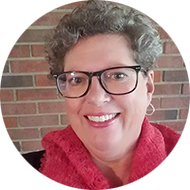 Claudia C. Hoeft, P.E., F.ASCE, National Hydraulic Engineer for the USDA - Natural Resources Conservation Service (NRCS), Washington DC
Claudia C. Hoeft, P.E., F.ASCE, National Hydraulic Engineer for the USDA - Natural Resources Conservation Service (NRCS), Washington DC
Incorporating Updated Runoff Curve Number Technology into NRCS Directives
In 1991, Claudia started her engineering career with NRCS and served as a hydraulic engineer in Columbia, Missouri; Indianapolis, Indiana; and Little Rock, Arkansas, prior to taking her current position in 2005. In this position, Claudia oversees and provides critical direction with specific leadership for NRCS policy, technical guidance including handbooks, technology including computer programs, and training materials related to hydrologic and hydraulic analysis of watersheds, floodplains, wetlands, agricultural and urban lands, and streams for NRCS water resource projects. She oversees and coordinates with other NRCS engineering specialists regarding earthen embankment dams constructed through the NRCS Watershed and Flood Prevention Program, and other hydraulic structures constructed with assistance provided to landowners through various NRCS-administered programs.
She authored, co-authored, or served as editor for portions of the NCRS National Engineering Handbook (NEH) on Hydrology and NEH on Snow Survey and Water Supply Forecasting. Claudia graduated from the University of Missouri-Rolla (now the Missouri University of Science and Technology – MS&T) in 1990 with a B.S. in Civil Engineering and was inducted into the MS&T Academy of Civil Engineers in 2017. A member of ASCE since a student, Claudia was elevated to a Fellow in 2016. She is an active member of the Watershed Management Technical Committee (WMTC) since 2006, and served ASCE as secretary, vice-chair, and chair of the WMTC from 2010 until 2015. She worked with WMTC and ASCE representatives to develop a Memorandum of Understanding to establish a framework for cooperation between NRCS and ASCE, and a cooperative agreement between NRCS and ASCE to update several chapters of the NRCS National Engineering Handbook on curve number hydrology. Claudia is a registered professional engineer in Indiana and Missouri.
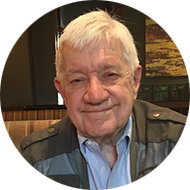 Dr. Richard “Pete” Hawkins, P.E., F.ASCE, F.EWRI, Professor Emeritus, University of Arizona, Tucson, AZ.
Dr. Richard “Pete” Hawkins, P.E., F.ASCE, F.EWRI, Professor Emeritus, University of Arizona, Tucson, AZ.
Dr. Hawkins has over 50 years of experience in engineering, hydrology, and natural resources, in education, research, and agency and consulting practice. Recently retired, he taught a variety of courses in general and watershed hydrology, modeling, hydraulics, sediment, water quality, fire science, and statistics. He has published widely in his specialty fields of small watershed hydrology and rainfall-runoff modeling, with accent on land condition impacts. He has taught continuing education courses on Curve Number rainfall-runoff for ASCE and for several local flood control interests. A native of Missouri, he is a graduate of the University of Missouri Columbia, with degrees in both Civil Engineering and in Forestry, and received MS and PhD degrees in Watershed Management from Colorado State University. He has also served on the faculties of Colorado State University, SUNY-Syracuse, and Utah State University. At Arizona he was the Chair of the Watershed Resources program for 10 years.
In 2011 was a Visiting Professor with the Warsaw (Poland) University of Life Sciences, and in 2013 at the Universita Degli Studi de Palermo (Italy) Dipartimento Scienze Agrarie e Forestali. He has experience with the US Forest Service, USDA-ARS, the California Department of Water Resources, and the California Division of Soil Conservation. In 1986-87 he served as a Distinguished Visiting Scientist with the USEPA in Corvallis OR. He has received several awards for professional service and scholarship, and has had numerous international and consulting assignments. He has been a member of ASCE’s Watershed Management Committee since 1961. In 2003, Dr. Hawkins received ASCE’s Arid Lands Hydraulic Engineering Award.
